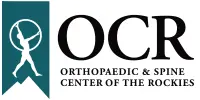
Anne Schmitt returns to her hobbies following her CMC Arthroplasty surgery. CMC arthroplasty of the thumb is the common surgical procedure used to treat arthritis of the base of the thumb.
Anne Schmitt has been playing the piano since she was a little girl. She also knits, gardens and shows her Australian Shepherds. As pain started developing in her thumbs, she eventually had to give up the things she enjoyed, “I started getting pain in my thumbs all the time… even picking up a piece of paper would trigger excruciating pain.”
Anne tried injections and therapy to ease her pain but nothing seemed to help. “The pain and dysfunction were interfering with my life. When I couldn’t knit or garden, I knew it was time for surgery.”
In order to get back to the life Anne enjoyed she elected to have surgery, which would provide permanent relief of pain and return to function.
Following Anne’s surgery, the recovery was five months, “I was in a cast for five weeks and a splint for four weeks. Dr. Pater warned me that the recovery was long and would be frustrating at times,” Anne said. Recovery did prove to be frustrating for Anne; nonetheless, as time passed she was gaining function and gratefulness. “Dr. Pater is my hero because he has made such a difference in my life,” Anne commented.
Today you can find Anne working in her garden or grooming her Aussies. Anne says it best, “I’m even starting to knit again which is perfect because I’m going to be a grandma.”
About Anne’s Surgery: Arthritis in the thumb joint is extremely common. CMC arthroplasty of the thumb is the common surgical procedure used to treat arthritis of the base of the thumb. It is a procedure which involves removing some of the bone at the base of the thumb. Then, a tendon is taken from a different area of the wrist and forearm and used to recreate the important ligament in the thumb and fill the void that is left by removal of the arthritic portion of the bone. This provides a nice cushion for the thumb to function without pain instead of the “rusty” hinge that is present prior to the procedure from the arthritis. In a typical week Dr. Pater sees several new patients (5-10) with this problem. If things can be done to manage the symptoms such as cortisone, thumb bracing and arthritis medication then that is the preferred treatment option; nonetheless a definitive solution is surgery. Surgery allows permanent relief of pain and return to function. Dr. Pater performs 60-75 of these procedures every year or about 1-2 every week.
